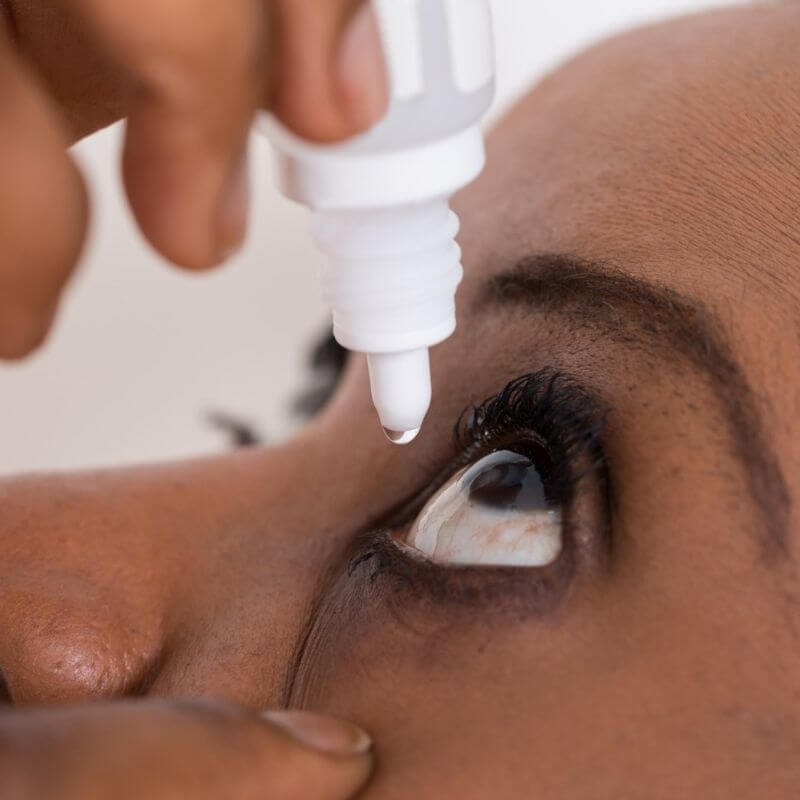Glaucoma is an eye disease that gradually damages the optic nerve leading to irreversible loss of vision. If it is not detected early and managed properly, it can cause total blindness.
Although anyone can get glaucoma, some people have a higher risk of getting the disease. These include people who;
- Have a family history of glaucoma.
- Are 40 years or above.
- Have any of these conditions – diabetes, hypertension, heart disease, or sickle cell disease.
- Have high myopia.
- Have/had an eye injury.
- Have undergone eye surgery.
- Used or have been using corticosteroid medications for a long time (8 weeks or longer).
If you are at risk of glaucoma, here are five things you must do to avoid losing your vision.
Perform aerobic exercisies regularly
Are you wondering what aerobic exercises have to do with lowering glaucoma risk? Read on.
Exercise is good for the body, and the eyes are no exception.
Vision loss from glaucoma occurs when high eye pressure or other factors that trigger glaucoma cause a reduction in the amount of blood that gets to the optic nerve. This gradually leads to the death of nerve cells and vision loss.
Aerobic exercises increase blood flow to the optic nerve and also lower eye pressure. These reduce the risk of optic nerve damage. Some studies have shown that exercise can lower the risk of developing glaucoma by as much as 45-73%.
To reduce glaucoma risk with aerobic exercises, you must do them regularly (at least 30 minutes, every two days) and avoid staying in positions that increase eye pressure (such as staying head-down while performing yoga).
Avoid/quit habits and exposures that can trigger or worsen glaucoma
Certain habits and environmental exposures can trigger or worsen glaucoma. To reduce your risk of getting glaucoma, you need to quit these habits and minimize your exposure to environmental hazards. These habits and exposures include:
- Smoking
- Excessive coffee consumption
- Performing hazardous jobs without eye protection
- Prolonged use of medications that increase or lower your eye pressure excessively. Examples of such medications are corticosteroids (which can increase eye pressure) and a combination of multiple blood pressure medications (which excessively lower eye pressure).
Eat healthy, balanced meals at least 80% of the time
Eating healthy balanced meals is essential for lowering your risk of glaucoma and maintaining good eye health in general. Healthy and balanced meals supply your optic nerves and retina with the nutrients they require to remain healthy.
Foods rich in nutrients such as Vitamins (A, C, D, E), Zinc, Omega 3 fatty acids, Lutein and Zeaxanthin are especially good for the eyes. These include leafy green vegetables, fruits, oily fish, whole grains, eggs, shellfish, legumes, nuts, and tubers.
Go for glaucoma screening and monitor your vision regularly
You may have heard this before and ignored it. However, its importance cannot be over-emphasized because you cannot properly manage what you do not know its status.
If you check your eyes and you are glaucoma-free, your focus will be to reduce your risk of getting glaucoma. However, if you check your eyes and you already have glaucoma, your focus will be to treat it and prevent it from getting worse.
Again, glaucoma screening is critical because, for most cases, glaucoma does not give warning signs ….no eye pain, no blurry vision, no headache, no itching, no symptom at all.
Without regular eye checks, most people who have the disease suddenly discover that they are going blind. I am sure you wouldn’t want that to happen to you, right?
So, please, go for glaucoma screening as soon as possible.
Also note that it is not enough to go for glaucoma screening once. You need to monitor your vision from time to time to avoid being taken unawares by the disease. To do so, go for comprehensive eye checks annually or as your eye doctor recommends. Also, monitor your vision at home in between your visits to the eye clinic.
To learn how to monitor your vision at home, get a copy of the free e-book titled ‘Do-It-Yourself Eye Check’. It contains information on the different eye tests you can do at home to help you keep tab on your eye health and avoid being taken unawares by a potentially vision-threatening eye condition. Click here to get a free copy
